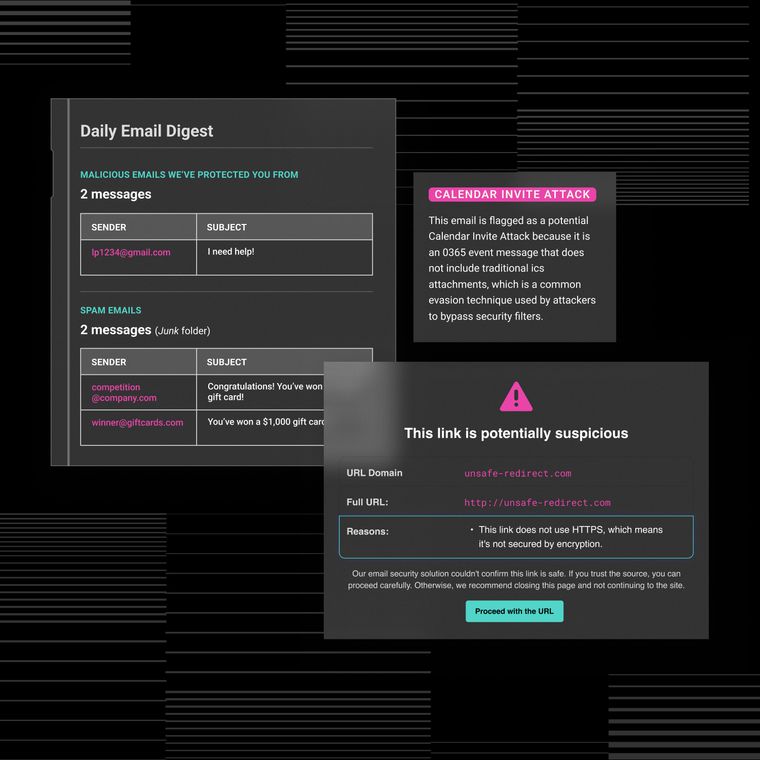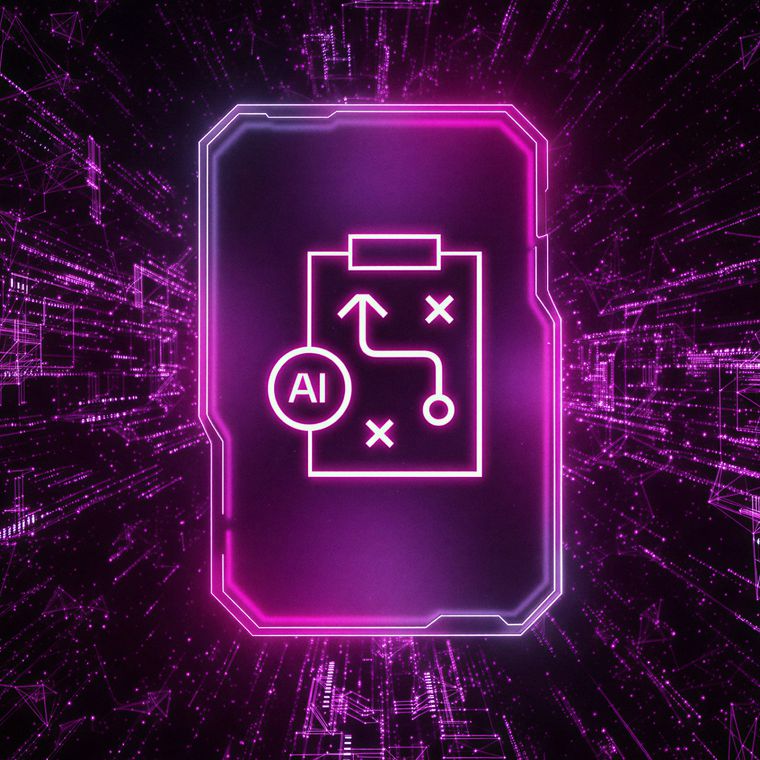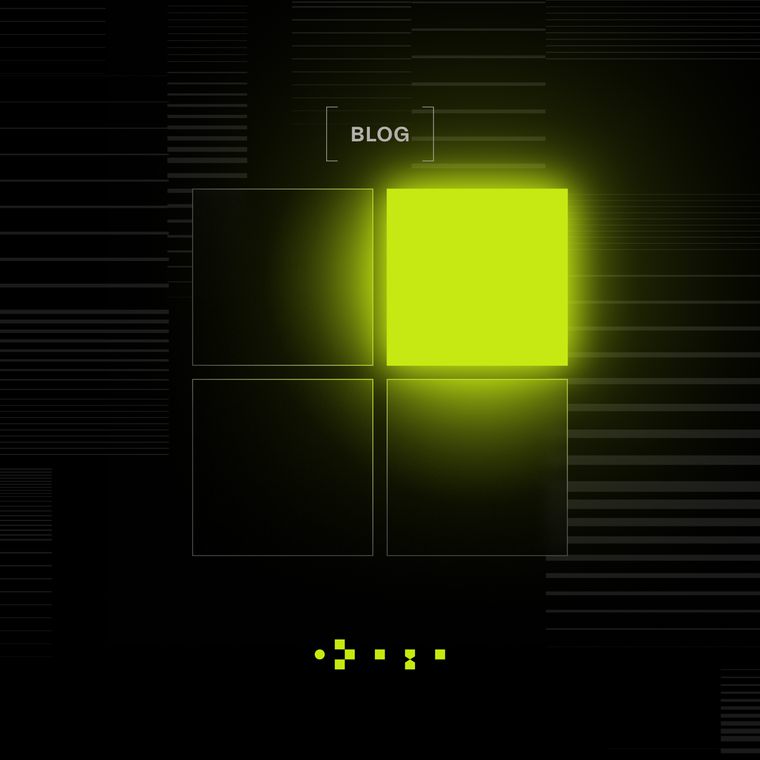The Ultimate Guide to SOC Modernization for Effective Security Operations
Learn what SOC modernization is, why it matters, and how to build a faster, more compliant modern SOC.
July 3, 2025
In 2024, the digital threat landscape experienced a significant escalation. There was a 31% increase in publicly disclosed security vulnerabilities and a 20% rise in active exploitations. This indicates an expansion of accessible targets for malicious actors.
Numbers like these show exactly why traditional security operations centers (SOCs) are falling behind. The sheer volume of security alerts has become overwhelming, individual tools often operate in isolated silos, and cyber threats evolve far too quickly for human teams to contain them. This outdated approach leaves organizations vulnerable, reacting to incidents rather than proactively defending against them.
This is why modernizing your SOC is the critical shift that every enterprise needs. This transformation moves security from a reactive stance to a proactive, intelligence-driven approach. This guide provides a clear roadmap to achieving these tangible improvements.
What Is SOC Modernization?
SOC modernization replaces outdated, reactive security efforts with a smart, integrated system. Instead of security teams constantly "fighting fires" after an attack, a modernized SOC uses advanced technology to anticipate, detect, and respond to threats at speed. It moves beyond relying solely on human analysts to handle every alert.
It relies on four enabling technologies:
AI and machine learning correlate signals and surface true positives in real time
Extended Detection and Response (XDR) unifies endpoint, network, email, and cloud telemetry
Cloud-native logging scales on demand without crippling storage costs
Security Orchestration, Automation, and Response (SOAR) playbooks execute containment steps automatically
A traditional SOC relies on siloed tools, manual processes, and reactive operations, which often lead to delayed response times and high operational costs. In contrast, a modern SOC integrates automation, unified data, and AI-driven detection to deliver faster response, improved efficiency, and greater alignment with business risk.
Here’s a quick comparison of both the SOC options based on a few key criteria:
Category | Traditional SOC | Modern SOC |
Infrastructure | Relies on on-premises appliances and hardware-dependent infrastructure. Requires dedicated space, manual updates, and heavy maintenance. Limits scalability. | Operates in cloud-native or hybrid environments for scalable, flexible deployment. Real-time updates and integrations without physical constraints. |
Data Integration | Uses siloed SIEMs and isolated point products, creating blind spots and duplication. Correlation between sources is labor-intensive. | Centralizes data in a secure data lake feeding XDR platforms. Enables real-time enrichment, cross-domain correlation, and seamless multi-surface detection. |
Threat Detection | Depends on static, rule-based detection that’s reactive. Often misses novel or evolving attack patterns. | Uses AI and ML for behavior-based and anomaly detection. Enables proactive detection of sophisticated threats with reduced dwell time. |
Response | Requires manual coordination between teams, leading to response times of hours or days. Increases risk and potential spread of threats. | Uses SOAR tools and automation to respond in minutes. Executes predefined playbooks for rapid containment of compromised accounts and minimal human error. |
Analyst Workflow | Involves switching between multiple tools and consoles, causing inefficiencies, fatigue, and missed alerts. | Provides a unified work surface with consolidated telemetry, alerts, and automated context. Frees analysts for threat hunting and strategic investigation. |
The Key Benefits of SOC Modernization
Modernizing your SOC accelerates threat detection, enhances decision-making, and delivers measurable improvements in risk reduction, incident response, and compliance.
Here are the key benefits tailored for different roles within an organization:
Benefits for CISOs: CISOs benefit from reduced mean time to detect (MTTD) and mean time to respond (MTTR), enabling faster, data-driven conversations with executive leadership. Cloud-native platforms unify tools, eliminate point product sprawl, and cut licensing and maintenance costs by double-digit margins. With centralized analytics and real-time metrics, security leaders can present clear, board-ready dashboards that align security outcomes with business goals.
Benefits for Security Operations Managers: Security Operations Managers gain operational efficiency by consolidating fragmented tools into a single, integrated surface. Unified telemetry across endpoints, cloud, and network simplifies detection while automated enrichment and playbook-based escalation shrink alert queues.
Benefits for Compliance Officers: Compliance Officers benefit from auditable pipelines that log detections, evidence, and responses with tamper-proof timestamps. Automated control monitoring and centralized reporting reduce audit prep time by up to 40%, replacing spreadsheet chaos with integrated compliance dashboards that support evolving regulatory requirements.
SOC modernization delivers tangible value across the security organization. CISOs gain actionable insights to support strategic decisions, Security Operations Managers improve efficiency through automation and integration, and Compliance Officers streamline audit readiness with centralized, tamper-proof evidence trails. By unifying capabilities on a modern platform, organizations can reduce risk, increase agility, and align security performance with business priorities.
Six Steps to a Modern SOC
Successfully modernizing your SOC involves a structured six-step approach that progresses from foundational discovery to sustained optimization. Each step is designed to build upon the previous one, delivering measurable improvements in visibility, threat detection, response times, and overall risk reduction. Following this sequence prevents the reintroduction of tool sprawl, fragmented workflows, and operational inefficiencies.
1. Baseline Assessment and Gap Analysis
Begin your modernization journey by establishing a clear understanding of your current SOC maturity. This starts with a structured assessment that aligns your capabilities to the NIST Cybersecurity Framework, identifying whether your practices are partial, risk-informed, or adaptive. Alongside this, inventory all tools, processes, data feeds, and staff roles. Many organizations uncover a surprising number of overlapping products and manual processes that inflate costs and slow response times.
Quantitative data, such as alert volume, false-positive rate, mean time to detect (MTTD), mean time to respond (MTTR), and tool-related spending, will form the foundation of your performance baseline. However, metrics alone rarely capture the whole picture. Supplement your assessment with qualitative insights from analysts to identify where workflows break down, such as ineffective playbooks or ignored consoles.
Most importantly, tie these findings to business priorities. For example, if executive stakeholders are concerned about ransomware, prioritize coverage gaps in endpoint telemetry and incident recovery procedures. Document these findings in a simple one-page scorecard and assign owners to each identified gap. Review this baseline quarterly to ensure continuous progress and accountability.
2. Consolidate and Integrate the Technology Stack
Once you understand where you stand, the next step is to eliminate redundancy and bring order to your tool ecosystem. Begin by evaluating each security product against three criteria: whether it delivers unique telemetry, covers critical controls, and offers accessible APIs. Products that fail in two or more areas are strong candidates for retirement.
Next, focus on building a unified architecture. Extended Detection and Response (XDR) platforms can help you consolidate telemetry from endpoints, cloud environments, and email into one cohesive layer. Choose solutions that allow open API integrations, so you can maintain flexibility while enriching detections with cross-domain context.
Additionally, create a security data pipeline that normalizes and enriches telemetry upon ingestion. Tag assets with relevant context, including ownership, criticality, and compliance scope. This structured approach reduces storage costs, improves detection precision, and lays a solid foundation for automation.
3. Automate Detection and Response with AI and ML
With a unified platform in place, automation becomes much more effective. Start by identifying repetitive, time-consuming tasks such as log parsing, ticket generation, and enrichment steps. Use these as candidates for SOAR playbooks that automate actions based on predefined triggers and conditions.
Integrating SOAR with your XDR platform allows for rapid, orchestrated responses across all layers of your security stack. AI and machine learning further elevate your capabilities by identifying behavioral anomalies and reducing reliance on static rules. These models can prioritize alerts by severity and intent, thereby significantly reducing false positives and enhancing analyst efficiency.
Governance is essential to sustain automation. Implement regular reviews to catch model drift and biases. Always pair automation with human override options to maintain control over sensitive actions. Additionally, establish thresholds to prevent feedback loops that may overwhelm your systems.
When executed effectively, automation transforms security operations. For example, credential phishing workflows can automatically disable accounts and prompt users to reset their passwords securely. Ransomware detections can isolate endpoints instantly and preserve forensic evidence for investigation. These capabilities not only improve response times but also free analysts to focus on proactive threat hunting.
4. Optimize Processes and Workflows
Modern tools only deliver value when paired with efficient processes. A unified work surface, where analysts can investigate, document, and respond from a single interface, is essential. This reduces fatigue and ensures shared visibility across teams.
Incorporate DevSecOps practices by treating detection content like software code. Store it in version control, review it through pull requests, and deploy updates via automated pipelines. This makes it easier to respond quickly when new threats emerge.
Clearly define roles and responsibilities using incident flow maps and service level agreements. For instance, when a Tier 1 analyst flags privilege escalation, a Tier 2 responder should know precisely when and how to take over. Document each process in living runbooks to accelerate onboarding and support audit readiness.
Quarterly purple-team exercises help identify bottlenecks and validate workflows in real-time. These simulations enhance readiness and highlight opportunities for further automation.
5. Upskill and Realign the SOC Workforce
As technology evolves, so must your team. SOC modernization introduces new roles such as automation engineers, detection engineers, and threat hunters. These roles focus on maintaining SOAR playbooks, tuning ML models, and proactively identifying threats.
Establish a training roadmap with progressive learning stages. Begin with hands-on labs for junior analysts to build foundational skills, then move to intermediate courses that cover cloud attack paths and playbook development. Senior staff should engage in red teaming and contribute to detection engineering efforts.
Beyond training, promote retention through meaningful work. Share internal success stories, offer promotion paths, and encourage collaboration across departments like IT and DevOps. When internal resources are stretched, consider managed detection and response (MDR) services for surge capacity while your team develops in-house capabilities.
Conduct regular skills assessments and tie training to business outcomes. Investing in people alongside technology ensures a resilient, future-ready SOC.
6. Governance, Metrics, and Continuous Improvement
The final step in SOC modernization is embedding governance to keep improvements on track. Form a governance board that includes security, operations, and compliance leads. Hold monthly metric reviews and quarterly strategy sessions to evaluate progress and pivot when necessary.
Distinguish between Key Performance Indicators (KPIs) like MTTR and alert closure rates, and Key Risk Indicators (KRIs) such as dwell time and triage bypasses. This dual focus helps track efficiency and exposure simultaneously.
Use feedback from real incidents to adjust playbooks and refine detection logic. Automate updates where possible and trigger manual reviews for anomalies or missed detections. Integrate curated threat intelligence to stay ahead of evolving tactics.
Regular capability assessments, such as purple-team exercises and MITRE ATT&CK evaluations, ensure that metrics reflect actual security outcomes. Translate performance into executive language, such as risk avoided and dollars saved, to maintain visibility and support from leadership.
Modernize Your SOC to Get Protected Against More Threats
Modernizing the SOC is a strategic shift. Abnormal supports this transition with AI-native, behavior-based threat detection that replaces legacy email security tools. Designed for CISOs, Security Operations Managers, and Compliance Officers, Abnormal empowers teams to operate more efficiently, reduce risk, and meet compliance goals with confidence.
Explore how Abnormal can modernize your security operations by booking a demo.
Related Posts
Get the Latest Email Security Insights
Subscribe to our newsletter to receive updates on the latest attacks and new trends in the email threat landscape.


